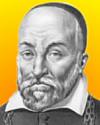
On 20 May 1537, Hieronymus Fabricius was born, an outstanding Renaissance anatomist who helped found modern embryology.
He published a book on the valves in veins, which influenced his pupil William Harvey to delve further into the circulation of blood.
Fabricius studied the development of the chick embryo in the egg, and published two books on the subject. In all, he published over a dozen medical works, which were translated and reprinted long after his death. One curious piece was an essay on the language of brutes.
For more on his productive life, read Biography of Hieronymus Fabricius, from Annals of Anatomy and Surgery (1880).

On 20 May 1918, Edward B. Lewis was born, an American developmental geneticist who was shared the 1995 Nobel Prize for Physiology or Medicine for discovering the functions that control early embryonic development. Lewis studied in fruit flies and their homeotic genes that govern the development of a larval segment into a specific body segment. He also made pioneering studies on ionizing radiation and human cancer. In doing so, he was propelled into a public storm over nuclear weapons testing policy. Today's book pick is: Genes, Development and Cancer: The Life and Work of Edward B. Lewis, by , by Howard D. Lipshitz (ed.). The editor has collected Lewis’ key publications and provided commentary giving scientific and historical context, with insight into Lewis’ insight and motivations.
It is available from Amazon, typically about New from $72.00. Used from $119.45. (As of earlier time of writing - subject to change.)
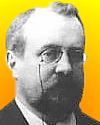 | The number of hypotheses and theories about climate change are numerous. Quite naturally they have caught the public attention, as any proof of past climactic change points to the possibility of future climate change, which inevitably will have significant implications for global economics. |
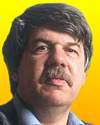 | In science “fact” can only mean “confirmed to such a degree that it would be perverse to withhold provisional assent.” I suppose that apples might start to rise tomorrow, but the possibility does not merit equal time in physics classrooms. |
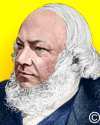 | Ohne Phosphor, Kein Gedanke. Without phosphorus there would be no thought. |
| Before you look at today's web page, see if you can answer some of these questions about the events that happened on this day. Some of the names are very familiar. Others will likely stump you. Tickle your curiosity with these questions, then check your answers on today's web page. | |
| Births | |
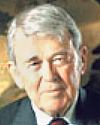 | William Redington Hewlett, born 20 May 1913, was an American electrical engineer who co-founded a leading manufacturer computers, computer printers, and analytic and measuring equipment. In 1939, he formed a partnership with a Stanford classmate. Their first product was an audio oscillator. Eight were sold to Walt Disney for Fantasia. Lesser-known early products were: bowling alley foul-line indicator, automatic urinal flusher, weight-loss shock machine. The company's first "plant" was a small garage in Palo Alto, with $538 initial capital. What is the name of the computer company he co-founded? |
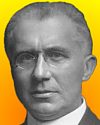 | Emil Berliner, born 20 May 1851, was a German-born American inventor who made important contributions to telephone technology, but had a more familiar invention which displaced Edison's product. What was his invention? |
| Deaths | |
 | Helen Brooke Taussig (1898-1986) was an American physician who was the founder of pediatric cardiology. She pioneered using X-rays and fluoroscopy to identify heart defects in newborns. In the 1940s, she and surgeon Alfred Blalock developed a surgical procedure for treating blue baby syndrome. In the early 1960s, Taussig was a major person in revealing and stopping the harm caused by a certain sedative drug which when taken by pregnant woman caused terrible deformations of their to newborn children. What was this sedative drug? |
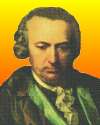 | Charles Bonnet (1720-1793) was a Swiss naturalist and philosophical writer who discovered parthenogenesis (reproduction without fertilization) in certain life forms. Bonnet also demonstrated the regenerative ability of annelid worms, found that insects breathe through pores which he called stigmata, studied photosynthesis and epinasty in plants and noted the emission of bubbles by a submerged illuminated leaf. In what life form did he discover parthenogenesis? |
| Events | |
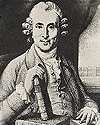 | On 20 May 1747, an experiment to remedy an illness found among sailors was begun by a British ship’s surgeon, James Lind, on the HMS Salisbury. He regulated the diets of the sailors, and especially included lemons and oranges. Positive results quickly showed that the illness, and the huge numbers of deaths, could be easily remedied in this way. What was the illness investigated by James Lind? |
 | On 20 May 1932, a female pilot took off for Ireland from Habor Grace, Newfoundland, to become the first woman to fly solo across the Atlantic Ocean. She later landed her plane in Ireland after a thirteen-hour, thirty-minute flight from Canada. What is the name of this aviatrix? |
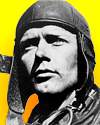 | On 20 May 1927, at 7:40 a.m., a male pilot took off from Roosevelt Field in Long Island, N.Y., in a monoplane on his historic first solo flight across the Atlantic Ocean. He arrived in France thirty-three and one-half hours later. What is the name of this aviator? |
Fast answers for the previous newsletter for May 19: haemoglobin • taxidermic method for mounting museum displays to show animals in their natural surroundings • an animal or human head • Halley’s Comet • carborundum.
 If you enjoy this newsletter, the website, or wish to offer encouragement or ideas, please send feedback by using your mail reader Reply button.
If you enjoy this newsletter, the website, or wish to offer encouragement or ideas, please send feedback by using your mail reader Reply button. Your click on a Facebook, StumbleUpon, or other social button on the site webpages is also a welcome sign of appreciation. Thank you for using them.
© This newsletter is copyright 2020 by todayinsci.com. Please respect the Webmaster's wishes and do not put copies online of the Newsletter — or any Today in Science History webpage. (If you already have done so, please remove them. Thank you.) Offline use in education is encouraged such as a printout on a bulletin board, or projected for classroom viewing. Online, descriptive links to our pages are welcomed, as these will provide a reader with the most recent revisions, additions and/or corrections of a webpage. For any other copyright questions, please contact the Webmaster by using your mail reader Reply button.
--
If you do not want to receive any more newsletters, Unsubscribe
To update your preferences and to unsubscribe visit this link
Executive Real Estate Business Class
-
"It was like a man with wings. It wasn't like anything you'd see on TV or in a monster movie." ...
About the publisher
Search This Blog
Blog Archive
-
▼
2021
(585)
-
▼
May
(62)
- Tonight: Back-to-Back Premieres
- On This Day for May 31 - Adolf Eichmann hanged, Cl...
- Newsletter for Monday 31 May.
- On This Day for May 30 - Joan of Arc burned at the...
- TONIGHT at 8/7c: The Tulsa Race Massacre Revealed
- Newsletter for Sunday 30 May.
- Bundle Up For The Summer!
- On This Day for May 29 - Mount Everest summit reac...
- Newsletter for Saturday 29 May.
- On This Day for May 28 - Amnesty International fou...
- Newsletter for Friday 28 May.
- On This Day for May 27 - Founding of St. Petersbur...
- Newsletter for Thursday 27 May.
- On This Day for May 26 - Martin Luther declared a ...
- Newsletter for Wednesday 26 May.
- On This Day for May 25 - U.S. Constitutional Conve...
- Newsletter for Tuesday 25 May.
- Behind Every Empire There’s a Titan
- On This Day for May 24 - Opening of the Brooklyn B...
- On This Day for May 23 - Tibet annexed by China, C...
- Newsletter for Sunday 23 May.
- The Tulsa Race Massacre, 100 Years Later
- On This Day for May 22 - Roman Emperor Constantine...
- Newsletter for Saturday 22 May.
- On This Day for May 21 - First nonstop solo transa...
- Newsletter for Friday 21 May.
- On This Day for May 20 - U.S. Homestead Act signed...
- Newsletter for Thursday 20 May.
- On This Day for May 19 - Ringling Bros. Circus for...
- Newsletter for Wednesday 19 May.
- Learning This Fun Doesn't Need A Summer Break
- On This Day for May 18 - Eruption of Mount St. Hel...
- Newsletter for Tuesday 18 May.
- On This Day for May 17 - School segregation outlaw...
- Newsletter for Monday 17 May.
- Follow the trail of 400 facts!
- On This Day for May 16 - Warsaw Ghetto Uprising su...
- Newsletter for Sunday 16 May.
- On This Day for May 15 - Edith Cresson appointed F...
- Newsletter for Saturday 15 May.
- On This Day for May 14 - Declaration of Israel's s...
- Newsletter for Friday 14 May.
- On This Day for May 13 - U.S. declaration of war o...
- Newsletter for Thursday 13 May.
- Ridiculous History You Want To Know About!
- On This Day for May 12 - First flight over the Nor...
- Newsletter for Wednesday 12 May.
- On This Day for May 11 - “New Rome” established by...
- Newsletter for Tuesday 11 May.
- On This Day for May 10 - Nelson Mandela inaugurate...
- Newsletter for Monday 10 May.
- On This Day for May 9 - Fourth and final voyage of...
- On This Day for May 7 - Theatre Royal opened, Pyot...
- On This Day for May 5 - Mexican victory in the Bat...
- On This Day for May 4 - Four students shot at Kent...
- On This Day for May 3 - Margaret Thatcher elected ...
- Newsletter for Monday 3 May.
- TONIGHT: The Bin Laden Raid, Revealed
- On This Day for May 2 - Lou Gehrig's 2,130-game st...
- Newsletter for Sunday 2 May.
- On This Day for May 1 - May Day founded, Arthur We...
- Newsletter for Saturday 1 May.
-
▼
May
(62)
-
Blogroll
-
About
HistoryFact










0 comments:
Post a Comment